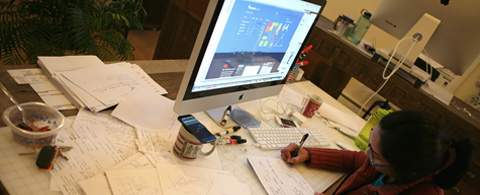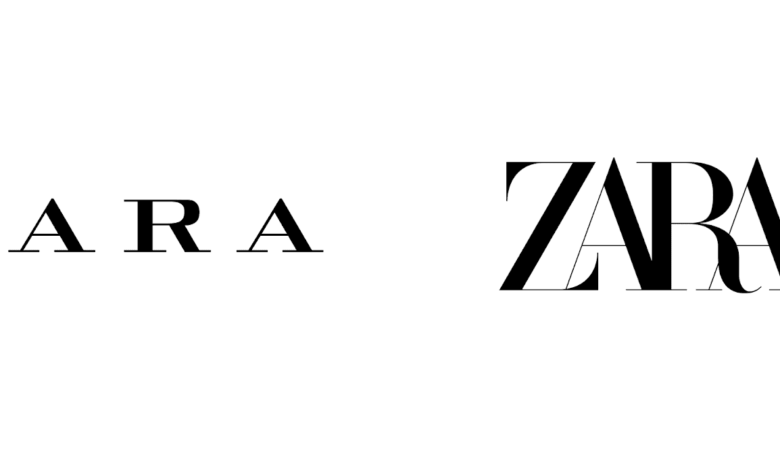Working under pressure can feel like you’re caught in the cross hairs of a critic scrutinizing your every move. Unfortunately you can’t see him because this critic sniper has mastered the art of hiding in plain sight – right inside your skull. We are usually our own worst critics and over time this can build up into self-doubt, creative block, and limitations on creative thought.
Criticism is healthy but over-criticism breeds disdain for creative work. In this post I want to share a few ideas for gauging thought patterns and pushing them in a constructive direction. Specifically I want to share a few methods to develop a stronger sense of temerity and fearlessness when it comes to creative boundaries. Confidence will allow you to peek down new avenues and break out of your comfort zone.
Exercise Brainstorming
If writing isn’t something you enjoy it’s possible to brainstorm ideas through drawings as well. But I highly recommend exercising your ideas through the written word because you might surprise yourself with some occulted ingenuity.
One of the quickest and simplest exercises you can perform is word association. Take any idea you want to work with and write it down in the center of the page. Then circle it and start drawing lines out of the circle with related ideas.
You don’t even need to write about a specific project in the beginning. You could just write the word “banana” and start drawing parallels like yellow, monkey, delicious(or abhorrent). Then you can draw other associations to those words and see where the writing takes you. Maybe you’ll think of a cool new idea, maybe it becomes ten minutes of scribbling about bananas.
The goal is to loosen up your thought patterns by making broad connections that don’t always happen with your regular train of thought. You could reformat this exercise to be in columns or lists, even done with visual sketches. The point is to keep your writing instrument moving and accept how it feels to put down new ideas rapidly – even if you think they’re ridiculous.
For every good idea there’s a handful of bad ones and this exercise helps you realize that it’s all quite natural.
Preliminary Reading
There’s a fine line between reading for reference and reading for procrastination. The former is quite useful especially when it comes to new topics. The latter is a great time-sink and you can still learn through excessive reading – but you learn more by doing.
The key to researching a new topic is finding the best content. Not every blog or website is created equal so be sure to look around online and find ways to determine quality. For example I find some great design content on Layer Vault which runs the gamut of UI, UX, animation, mobile app design, After Effects, I could go on but you get the idea.
User-curated news is an excellent way to find new blogs or websites. Look for domains which get continually submitted and voted to the top of websites like Hacker News or a subreddit based on your area of interest. Also check out forums and bulletin boards to see what other people suggest for reading material. Don’t be afraid to check out different articles that pique your interest and keep a bookmarked list of your favorite sites.
Embrace Failure
Failure can include the inability to perform an activity or the inability to understand a concept. Both situations are not great and they can even be discouraging. But nobody was born innately knowing how to speak Burmese or sketch jaw-dropping Bengal tigers. There is a middle ground where you suck for a bit, then don’t suck as much, then you start progressing better and faster.
The toughest part of any process is getting started from a dead stop. You need a lot of momentum to push through inertia and build a creative habit. But that can only happen through repeated failure and lessons learned in those moments of failure. Don’t cringe or wince at your initial attempts – embrace them and move right on to the next one.
It’s also important to accept that failure is better than nothing at all. Most people have a difficult time breaking into new creative areas because they would rather stick to what they know or just do nothing and relax. Once you’re in a mindset that truly accepts failure there is no reason to put off learning a new skill. The worst result is that you fail, and that’s actually a good thing.
Moving outside the typical comfort zone feels “uncomfortable” because it evokes feelings of uncertainty. But embracing this uncertainty is the best way to overcome the initial(and most difficult) obstacle of just doing something.
Start by Copying
Recently I found an intriguing TEDx Talk by Austin Kleon entitled “Steal Like an Artist”. The premise follows that most art has been copied and reworked from an earlier idea, or reworked from nature itself. By copying and comparing your work it’s easy to see what you’re doing wrong and where you need to improve.
When it comes to practice there’s no harm in copying other artists or designers. If you’re brand new to a field then it’s worth studying high-quality work you hope to create whether it’s writing, music, art, design, photography, or something else. You can’t build a career on copying other people but you can learn a lot – especially in the early stages.
If possible get back into the mindset you had when time wasn’t a factor. Back when there were no deadlines and you often created things just to create. This perspective holds very little pressure and allows you to completely delve into something independent of the outcome.
Improvise
Connecting new ideas is often about thinking or behaving in new ways. This leads me to an obscure but relevant idea: improvise! (cue jazz hands)
On this topic I have to recommend another extraordinary TEDx presentation by Dave Morris where he covers the overarching concept of improvisation. Most people think improvisation means improv comedy, which it can. But improv as a whole means acting spontaneously and following what feels right based on the context. Each situation usually has a set of rules or a general premise and as long as you work within those guidelines you can be spontaneous with everything else.
Try setting up little exercises for yourself to improvise ideas on-the-fly. It will feel uncomfortable at first but it’s really fun and worthwhile.
Rules will help contain the chaotic world of improvisation to something that’s more useful. For example, a fake client who requires a new homepage for IKEA that needs an image carousel and 7 specific navigation links. Then you’d go sketch a few wireframes for different IKEA homepages that fit the criteria. Work fast and loose – follow impulses and instincts rather than overthinking.
As with most new activities this will be uncomfortable and weird at first. Don’t sweat it too much because it’s just part of the process. Once you get more improv practice the ratio of good-to-bad output will become more proportional and then grow more favorable.
Final Thoughts
Trying new things and moving into new creative endeavors is all about doing rather than waiting. This seems plain and straightforward, because it is, but things are always easier said than done. If you can shift your perspective to a no-pressure mindset everything will flow a lot smoother. Try out some of these techniques and feel free to share your own tricks for getting past creative timidness.










This is great, one thing I really like that you mentioned is trying new ideas, sometimes I have so many people that need to approve something- I get scared to push the envelope. But, I realize good designers expand out of their comfort zone. So thanks for the great read, really motivates me to be more creative with my work.